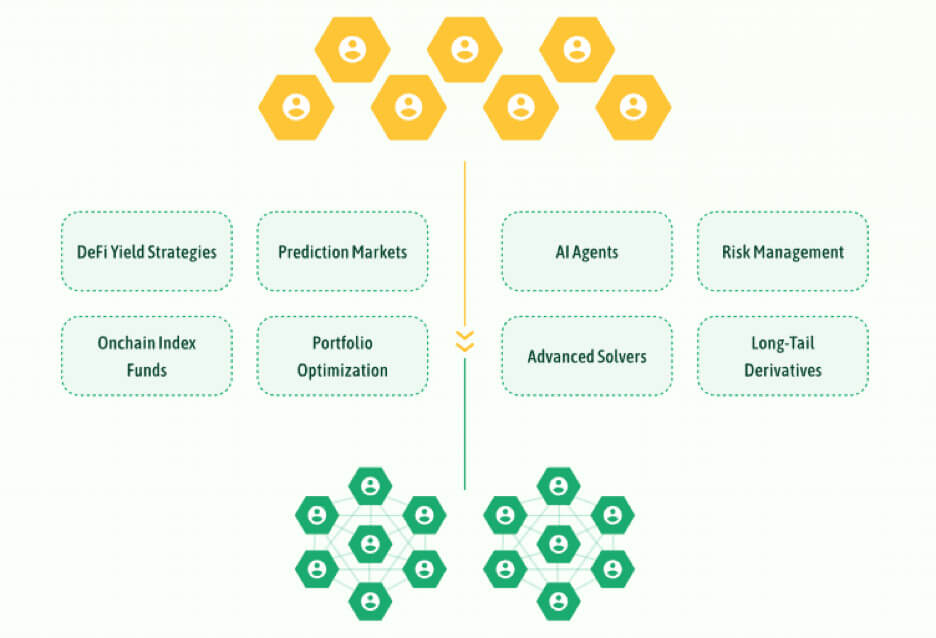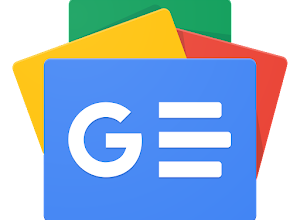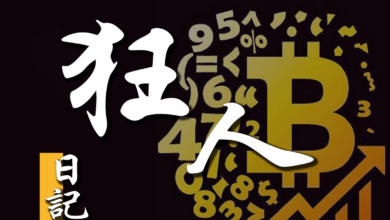How AI and crypto are shaping the future of finance
[ad_1]
Over the last three years, the crypto space has undergone massive upheavals. Alongside the boosting from stimulus packages in 2021, venture capital (VC) firms had invested $33 billion in crypto and blockchain startups.
The following year, the Federal Reserve triggered a domino of crypto bankruptcies with its interest rate hiking cycle, starting from the Terra (LUNA) crash and culminating in the FTX Ponzi scheme collapse.
The promise of DeFi lost its luster, not helped by over $3 billion lost in DeFi hacks during 2023. The ongoing Bitcoin bull run shows the lack of altcoin confidence as the so-called Altcoin Season is yet to manifest.
In June 2023, BlackRock’s head of strategic partnerships, Joseph Chalom, noted that DeFi’s institutional adoption is “many, many, many years away”. However, there is a case to be made that the emerging AI narrative can fuse with blockchain technology and its applications.
Taking in lessons from the previous cycle, what would that AI-crypto landscape look like?
Laying the AI Foundation with Crypto Composability
Looking back, it is safe to say that “DeFi” was subsumed by companies on top of tokenized layers, such as Celsius Network or BlockFi, rendering DeFi into CeFi. These companies successfully drove crypto adoption as such, only to end up sullying the very word “crypto”.
A renewed DeFi v2 should then focus on a superior user experience that doesn’t spark the demand for centralized companies to make it so. Most importantly, DeFi security must be fortified. The most promising solution in that direction is the zero-knowledge Ethereum Virtual Machine – zkEVM.
By abstracting chain transactions via zero-knowledge proofs (ZKPs), zkEVM increases network throughput and reduces gas costs. On top of that, zkEVM simplifies the user experience by facilitating alternative token payments for gas fees. In other words, zkEVM-like solutions pave the road to scalability needed for AI applications.
AI applications inherently involve high volumes of data, making it a potential bottleneck for blockchain networks. With this obstacle ahead, Polygon zkEVM makes it possible to generate AI artwork via the Midjourney image generator. In this process, the results could be tokenized as NFTs with low fees.
Building further on smart contracts of other kinds, the crypto space has laid the groundwork for AI with composability and permissionless access. Combined, this creates an autonomous and efficient infrastructure for financial markets. As every piece of market action can be disassembled into smart contracts, composability brings innovation across three composability layers:
- Morphological – components communicating between DeFi protocols, creating new meta-features.
- Atomic – ability for each smart contract to function independently or in conjunction with other protocols’ smart contracts.
- Syntactic – ability for protocols to communicate based on standardized protocols.
In practice, this translates to Lego DeFi bricks. For instance, Compound (COMP) allows users to supply liquidity into smart contract pools. This is one of DeFi’s revolutionary pillars as users no longer require someone’s permission to either loan or borrow. With smart contracts acting as liquidity pools, borrowers can tap into them by providing collateral.
Liquidity providers gain cTokens in return as interest. If the supplied token is USDC, the yielding one will be cUSDC. However these tokens can be integrated across the DeFi board into all protocols compatible with the ERC-20 standard.
In other words, composability creates opportunities for the multiplicity of yields, so that no smart contract is left idle. The problem is, how to efficiently handle this rise in complexity? This is where AI comes into play.
Amplifying Efficiency with AI
When thinking of artificial intelligence (AI), the main feature that comes to mind is superhuman processing. Financial markets have long ago become too complex for human minds to handle. Instead, humans have come to rely on predictive algorithms, automation and personalization.
In TradFi, this typically translates to robo advisors prompting users on their needs and risk tolerances. A robo advisor would then generate a profile to manage the user’s portfolio. In the blockchain composability arena, such AI algorithms would gain much greater flexibility to siphon yields.
By reading the market conditions on the fly as they access transparent smart contracts, AI agents have the potential to reduce market inefficiencies, reduce human error, and increase market coordination. The latter already exists in the form of automated market makers (AMMs) that deliver asset price discovery.
By analyzing order flows, liquidity and volatility in real-time, AI agents are ideally suited to optimize liquidity supply and even prevent DeFi flash loan exploits by coordinating between DeFi platforms and limiting transaction sizes.
Inevitably, as AI agents increase market efficiency through real-time market monitoring and machine learning, new prediction markets could emerge as liquidity deepens. The job of humans would then be to set bots to arbitrate against other bots.
At $42.5 billion across 2,500 equity rounds in 2023, AI investments have already outpaced the crypto peak of 2021. But which AI-crypto projects showcase the trend?
Spotlight on AI-Crypto Innovators
Since the launch of ChatGPT by OpenAI in November 2022, AI has been an attention grabber. The attention previously reserved for memecoins became diverted into AI advancements in reasoning, art generation, coding and most recently, text-to-video generation via Sora.
Across these fields of human interest, they all rely on the scaling of data centers. Unlike crypto tokens, which are smart contracts, AI tokens are the base blocks of text that the AI agent disassembles into relationship units. Depending on the attunement of each AI model, these tokens represent contextual windows for the relationships between concepts.
For each user prompt, it is challenging to allow maximum processing capacity. When the AI model breaks the text into tokens, the output relies on the token size. In turn, the token size determines the quality of the generated content, whatever it may be.
Obviously, the larger the token size, the larger the potential for an AI model to consider the greater number of concepts when generating content. Given such inherent limitations, AI tokens naturally fit blockchain tech.
Just as Web3 gaming tokenizes in-game assets for decentralized ownership, tradeable currency and reward incentives, the same can be done with AI. Case in point, Fetch.AI (FET) is an open-access protocol to connect Autonomous Economic Agents, via the Open Economic Framework to the Fetch Smart Ledger.
The FET token aims to monetize network transactions, pay for AI model deployment, reward network participants and pay for other services. And just as people connect with DeFi services via wallets, they can connect with Fetch.AI’s agentverse with a Fetch Wallet to take advantage of deployed AI protocols.
For instance, one of the many AI agents currently in beta agentverse is PDF Summarization Agent.

As a prospective pathway to democratizing AI agent access and deployment, FET token has gained 300% value since the beginning of the year. According to Market Research Future, AI agents market is forecasted to grow to $110.42 billion by 2032 from $6.03 billion 2023. This represents a compound annual growth rate (CAGR) of 43.80%.
Ultimately, we are likely to see an ecosystem of AI agents interacting with DeFi protocols and other services that would benefit from automating real-time decisions. This may expand to AI agents aiding self-driving EVs or even helping execute delicate surgeries and patient care. Pediatric surgeon Dr. Danielle Walsh at the University of Kentucky College of Medicine in Lexington said:
“A patient who wakes up at 1:00 in the morning 2 days after a surgical operation can contact the chatbot to ask, ‘I’m having this symptom, is this normal?’”
In medical diagnostics, Massachusetts-based Lantheus Holdings (LNTH) had already deployed its PYLARIFY AI imaging agent for early prostate cancer detection. With AI-crypto projects like Fetch.AI, many such services could be tokenized to full extent.
The Road Ahead: Challenges and Opportunities
Ahead of AI integration, blockchain platforms face the same problem – institutional adoption. Do smaller protocols have a chance to penetrate the mainstream, or is this reserved for institutions?
DeFi may have paved the way for tokenized financial markets, but big players are likelier to instill public confidence.
For instance, the Canton Network, which is supported by Big Bank and Big Tech, may supplant smaller DeFi fish. Eventually, the convenience of same-day bank transfers could be seamlessly integrated into blockchain networks. This is especially pertinent given that Microsoft is powering the Canton Network with Azure cloud while developing AI products.
At the same time, plenty of users would prefer to stay within open-access ecosystems, riding the value appreciation of AI-crypto tokens. Moreover, crypto protocols don’t have to be directly geared toward AI agent deployment. Case in point, The Graph (GRT) could be used for AI apps as a blockchain data indexing service.
Based on this speculation, this “Google of Blockchain” has gained a 103% boost year-to-date. One of the most prospective crypto projects aiding AI could be Injective Protocol (INJ). As it “injects” AI algorithms into aforementioned DeFi market actions, Injective aims to simplify and automate complex DeFi operations.
At the base layer of the AI-crypto intersection could be Allora Network, using its zero-knowledge machine learning (zkML) and federated learning to build AI apps for augmented DeFi experience.

If the rollout of these open apps is successful, institutional networks such as Canton would have diminished appeal. This dynamic will largely depend on regulatory agencies, which are yet to materialize rules even for the crypto space.
Conclusion
AI is poised to make data more intelligible, actionable and pertinent to a specific user. On the other hand, blockchain technology formalized and decentralized the logic of human action into self-executing smart contracts.
When the two spheres meet, we get AI agents with a renewed purpose. A new generation of tokenized robo-advisors that take full advantage of DeFi composability. And as AI agents explore new possibilities, new markets will emerge.
From predictive analysis to injecting liquidity into on-chain markets, AI agents are ready to craft a hyper-financialized future where, starting from Bitcoin itself, humans will encounter plenty of building blocks to capitalize on.
Mentioned in this article
[ad_2]
Source link





